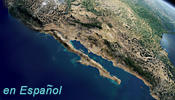![[Ocean Oasis Conservation]](images/bnr-conservation.gif)

![[Ocean Oasis Conservation]](images/bnr-conservation.gif) |  |
|
|

Rasa Island, a central part of the long-described phenomenon of breeding insular birds in the Sea of Cortés (Bancroft 1927, Case and Cody 1983), has served as a role model for successful ecological conservation of the islands in the Gulf of California. Immediately after its legal protection in 1964 (DOF 1964), the seabirds on this island became the subjects of intensive research, and were protected almost without interruption, due to the enormous commitment of almost three academic generations of Mexican biologists and the support from numerous academic and conservation organizations (Tobias 1968, Velázquez-Noguerón 1969, Velarde et al 1994, Velarde 1988, 1993). In the early 1960s a concern for the protection of Rasa grew with the drastic reduction in population numbers of nesting seabirds caused by egg collecting (Bahre and Bourillón). In 1940 the population of birds was estimated to be one million (Walker 1965), but by the late 1960s it had been reduced to 25,000 (Barreto 1973), and possibly reached a historic low with an estimated number of 5,000 nesting birds in 1973 (Villa 1983). The pioneering conservation effort of Louis Wayne Walker of the Arizona-Sonora Desert Museum and the National Audubon Society, George Lindsay and Robert Orr of the California Academy of Sciences, Bernardo Villa Ramírez from the National University of México (UNAM), and some leading residents of Bahía de los Angeles, notably Antero Díaz (Velarde et al. 1985), led the federal government to declare the island a seabird sanctuary. 
Once the island was declared a sanctuary, biologists working for the Mexican Wildlife Service started to spend time on the island during the seabirds' breeding season to provide on-the-ground protection and collect data. In 1965 a two-room stone house was built on the island (Vidal 1967). Researchers stayed more time on the island every year as UNAM students working under Villa's guidance started to get involved in the conservation efforts. Villa himself spent many seasons on the island between 1975-1985, and in 1979 one of his students, Enriqueta Velarde, took over the research and conservation tasks inspired by Villa's remarkable pioneer work. Under Velarde's direction, biologists have been present during the seabird breeding season (middle March to early July) from 1979 to the present. The scientists and students have researched seabird breeding ecology and behavior, and the island's natural history. They also have worked together to prevent possible disturbance by the 300 or more ecotourists that visit the island every year (Villa et al. 1979, 1980, Velarde and Anderson 1994), and to deter fishermen from collecting eggs and from landing or hiking in nesting areas. The success of this scheme of island research and protection has been evident. Seabird populations have rebounded to an estimated average of 350,000 Heermann's Gull (Vermeer et al. 1993), and 45,000 Elegant Terns (Velarde and Anderson 1994). In 1993/1994 a program to eradicate introduced rats (Rattus rattus) and mice (Mus musculus) was initiated by the late Jesús Ramírez, who had done the pioneer research on bighorn sheep in Tiburón Island. The complete eradication of introduced rodents using modern rodenticides was achieved by 1995. Researchers have not found any sign of rodent activity while doing monitoring work during the field seasons of 1998 and 1999 (Velarde pers.com. Sep.1998, Pfister pers.com. Jul 1999). Now that the island is free of introduced mammals, scientists are monitoring ecological changes in the nesting colonies, the vegetation, and the insect populations. They also have plans to restore the populations of burrow-nesting seabirds such as the Craveri's Murrelet (Synthliboramphus craveri), the Black Storm-Petrel (Oceanodroma melania) and Least Storm-Petrel (O. microsoma) that used to nest on the island, and perhaps even the Manx Shearwater (Puffinus puffinus) reported by Bancroft in the late 1920s (Boswall and Barrett 1978).
Continue to |
|
Text adapted from the conservation chapter of the book Island Biogeography in the Sea of Cortés, a forthcoming volume edited by Ted Case, Martin Cody, and Exequiel Ezcurra. The chapter was authored by Luis Bourillon, Antonio Cantú, Exequiel Ezcurra, María Elena Martínez, and Alejandro Robles. |
Photographs by Bradford Hollingsworth
Conservation | Site Index | Ocean Oasis
San Diego Natural History Museum & PRONATURA
© 2000 CinemaCorp of the Californias